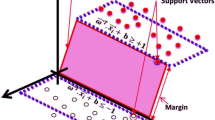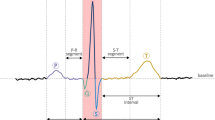Abstract
Cardiovascular diseases are a leading cause of increased mortality worldwide. Electrocardiogram (ECG) signals is the most effective tool and plays a crucial role in diagnosing heart conditions. The detection of R peaks within the QRS complex is pivotal for accurate heart condition diagnosis. However, denoising ECG signals and accurately detecting R peaks present significant challenges due to various noise factors. This research paper proposes an efficient R peak detection technique that leverages the Maximal Overlap Discrete Wavelet Transform (MODWT) in conjunction with the Fejer–Korovkin (FK) wavelet function. The proposed methodology is rigorously validated using standard physionet databases. The results of the proposed algorithm demonstrate exceptional performance for the TWADB and QTDB databases. For TWADB and QTDB, a sensitivity (Se+) of 99.97%, a positive prediction (P+) rate of 99.64%, a low detection error rate (DER) of 0.04 and QTDB, a Se+ of 99.95%, a P+ rate of 99.99%, and an extremely low DER of 0.063 has been achieved, respectively.




Similar content being viewed by others
Availability of data and materials
On the request
Code availability
Available on the request.
References
Singh PN, Mahapatra RP (2023) A novel deep learning approach for arrhythmia prediction on ecg classification using recurrent cnn with gwo. Int J Inform Technol, 16:1–9
Mahajan P, Kaul A (2023) Optimized multi-stage sifting approach for ecg arrhythmia classification with shallow machine learning models. Int J Inform Technol, 16:1–16
Sharma LD, Sunkaria RK (2021) Detection and delineation of the enigmatic u-wave in an electrocardiogram. Int J Inform Technol 13:2525–2532
Rao BM, Kumar A, Bachwani N, Marwaha P (2023) Detection of atrial fibrillation based on Stockwell transformation using convolutional neural networks. Int J Inform Technol 15:1937–1947
Chen H, Maharatna K (2020) An automatic r and t peak detection method based on the combination of hierarchical clustering and discrete wavelet transform. IEEE J Biomed Health Inform 24:2825–2832
Cao H, Peyrodie L et al (2023) Variational mode decomposition-based simultaneous r peak detection and noise suppression for automatic ecg analysis. IEEE Sens J 23:8703–8713
Venkatesh C, Lavanya M, Naga Swetha P, Naganjaneyulu M, Mohan Kumar Reddy K (2023) A neural network-based cardiovascular disease detection using ecg signals. Springer, pp 291–304
Mondhe D (2022) Cardiovascular disease detection using machine learning. Springer, pp 243–252
Belkadi MA, Daamouche A (2021) A robust qrs detection approach using stationary wavelet transform. Multimed Tools Appl 80:22843–22864
Sharma N, Sunkaria RK, Sharma LD (2022) Qrs complex detection using stationary wavelet transform and adaptive thresholding. Biomed Phys Eng Express 8:065011
Wang H et al (2022) Qrs detection of ecg signal using u-net and dbscan. Multimed Tools Appl 81:13319–13333
Guendouzi F, Attari M (2022) Qrs complex detection in ecg signals using empirical wavelet transform and flower pollination algorithm. Period Polytech Electr Eng Comput Sci 66:380–390
Mansourian N, Sarafan S, Torkamani-Azar F, Ghirmai T, Cao H (2023) Novel qrs detection based on the adaptive improved permutation entropy. Biomed Signal Process Control 80:104270
Karakulak E (2023) Adaptive thresholding based low complexity qrs detection algorithm. Balıkesir Üniversitesi Fen Bilimleri Enstitüsü Dergisi 25:78–89
Moody GB, Mark RG (2001) The impact of the mit-bih arrhythmia database. IEEE Eng Med Biol Mag 20:45–50
Laguna P, Mark RG, Goldberg A, Moody GB (1997) A database for evaluation of algorithms for measurement of qt and other waveform intervals in the ecg, In: Computers in Cardiology. IEEE pp 673–676. https://doi.org/10.1109/CIC.1997.648140
Moody G (2008) The physionet/computers in cardiology challenge 2008: T-wave alternans, pp 505–508
Roushangar K, Dolatshahi M, Alizadeh F (2023) Modwt and wavelet coherence-based analysis of groundwater levels changes detection. Paddy Water Environ 21:59–83
Pan J, Tompkins WJ (1985) A real-time qrs detection algorithm. IEEE Trans Biomed Eng, 32:230–236
Lu X, Pan M, Yu Y (2018) Qrs detection based on improved adaptive threshold. J Healthc Eng
Zalabarria U, Irigoyen E, Martinez R, Lowe A (2020) Online robust r-peaks detection in noisy electrocardiograms using a novel iterative smart processing algorithm. Appl Math Comput 369:124839
Modak S, Taha LY, Abdel-Raheem E (2021) A novel method of qrs detection using time and amplitude thresholds with statistical false peak elimination. IEEE Access 9:46079–46092
Zhao K, Li Y, Wang G, Pu Y, Lian Y (2021) A robust qrs detection and accurate r-peak identification algorithm for wearable ecg sensors. SCIENCE CHINA Inf Sci 64:182401
Pandit D et al (2017) A lightweight qrs detector for single lead ecg signals using a max-min difference algorithm. Comput Methods Programs Biomed 144:61–75
Elgendi M (2013) Fast qrs detection with an optimized knowledge-based method: evaluation on 11 standard ecg databases. PLoS One 8:e73557
Funding
Not applicable.
Author information
Authors and Affiliations
Contributions
All authors contributed equally to prepare this manuscript
Corresponding author
Ethics declarations
Conflict of interest
The authors declare that they have no conflict of interest.
Ethics approval
Not applicable.
Consent to participate
Not applicable.
Consent for publication
Not applicable.
Rights and permissions
Springer Nature or its licensor (e.g. a society or other partner) holds exclusive rights to this article under a publishing agreement with the author(s) or other rightsholder(s); author self-archiving of the accepted manuscript version of this article is solely governed by the terms of such publishing agreement and applicable law.
About this article
Cite this article
Besfat, H.M., Gelmecha, D.J. & Singh, R.S. Delineation of QRS features and denoising of ECG signal using Fejer Korovkin wavelet. Int. j. inf. tecnol. (2024). https://doi.org/10.1007/s41870-024-01804-2
Received:
Accepted:
Published:
DOI: https://doi.org/10.1007/s41870-024-01804-2




